#helene millard
Text










The Gunfighter (1950) dir. Henry King
#the gunfighter#1950#henry king#gregory peck#helen westcott#millard mitchell#skip homeier#1950s#screencaps#august 2024#4/5
6 notes
·
View notes
Text



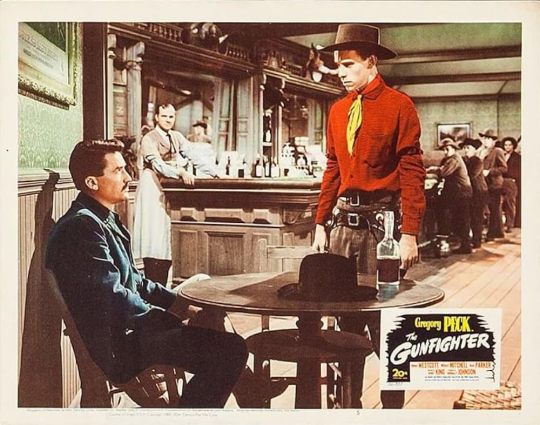
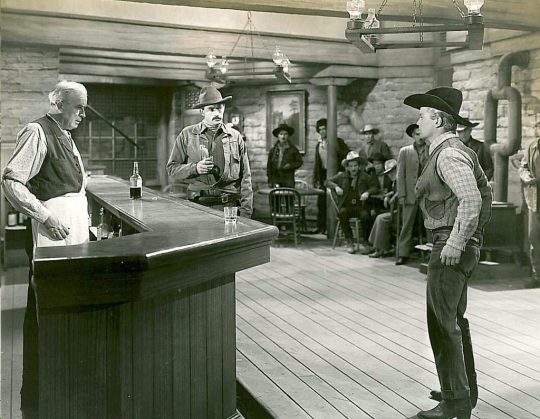

The Gunfighter (1950) Henry King
December 2nd 2023
#the gunfighter#1950#henry king#gregory peck#millard mitchell#helen westcott#karl malden#skip homeier#jean parker
5 notes
·
View notes
Photo

The Gunfighter (Henry King, 1950)
12 notes
·
View notes
Photo

The Gunfighter (1950)
0 notes
Text
Round 1 is officially over!
Congratulations to the actresses who made it to Round 2!
Round 2 will begin on Saturday, May 4th
The winners of Round 1:
Maude Adams
Anna Maria Alberghetti
Julie Andrews
Angela Baddeley
Hermione Baddeley
Lauren Bacall
Olga Baclanova
Pearl Bailey
Josephine Baker
Lucille Ball
Anne Bancroft
Tallulah Bankhead
Theda Bara
Mona Barrie
Jessie Bateman
Polly Bergen
Claire Bloom
Mrs Patrick Campbell
Diahann Carroll
Lina Cavalieri
Helen Chandler
Geraldine Chaplin
Ruth Chatterton
Claudette Colbert
Constance Collier
Gladys Cooper
Katharine Cornell
Phyllis Dare
Zena Dare
Ruby Dee
Judi Dench
Stephanie Deste
Marie Doro
Geraldine Farrar
Maude Fealy
Edwige Feuillère
Susanna Foster
Trixie Friganza
Jane Froman
Eva Gabor
Zsa Zsa Gabor
Mary Garden
Greer Garson
Dusolina Giannini
Hermione Gingold
Dorothy Gish
Lillian Gish
Frances Greer
Mata Hari
Dolores Hart
Olivia de Havilland
Jill Haworth
Audrey Hepburn
Libby Holman
Lena Horne
Sally Ann Howes
Ethel Irving
Diane Keaton
Lisa Kirk
Eartha Kitt
Angela Landbury
Carol Lawrence
Vivien Leigh
Lotte Lenya
Beatrice Lillie
Bambi Linn
Gillian Lynne
Heather MacRae
Jayne Mansfield
Mary Martin
Jessie Matthews
Siobhán McKenna
Meng Xiaodong
Helen Menken
Ethel Merman
Cléo de Mérode
Evelyn Millard
Liza Minnelli
Rita Moreno
Odette Myrtil
Pola Negri
Julie Newmar
Nichelle Nichols
Maureen O’Sullivan
Aida Overton Walker
Anna Pavlova
Bernadette Peters
Lily Pons
Rosa Ponselle
Lee Remick
Diana Rigg
Thelma Ritter
Chita Rivera
Ginger Rogers
Lillian Russell
Rosalind Russell
Diana Sands
Lizabeth Scott
Maggie Smith
Emily Stevens
Susan Strasberg
Barbra Streisand
Yma Sumac
Inga Swenson
Laurette Taylor
Hilda Trevelyan
Monique Van Vooren
Fannie Ward
Ethel Warwick
Elisabeth Welch
Mae West
Anna May Wong
Diana Wynyard
Yoshiko Yamaguchi
8 notes
·
View notes
Text

Robert Montgomery and Norma Shearer in Their Own Desire (E. Mason Hopper, 1929)
Cast: Norma Shearer, Belle Bennett, Lewis Stone, Robert Montgomery, Helene Millard, Cecil Cunningham, Henry Herbert, Mary Doran, June Nash. Screenplay: Frances Marion, based on a novel by Sarita Fuller. Cinematography: William H. Daniels. Art direction: Cedric Gibbons. Film editing: Harry Reynolds. Music: William Axt.
Their Own Desire was Norma Shearer's third talkie, but she still hasn't found her voice, sounding a bit thin with a rather shrill laugh. Her brother, Douglas Shearer, the head of MGM's sound department, may have helped her get the right pitch, because her next film, The Divorcee (Robert Z. Leonard, 1930), won her the best actress Oscar. (In fact, the Oscar ballot listed her nomination as for both The Divorcee and Their Own Desire, but the official citation showed her as a winner for only the former. Academy record-keeping was primitive at the time, so no one today knows if the voters indicated a preference for the one film over the other -- as they should have, since her performance in The Divorcee is indeed the better one.) In Their Own Desire, Shearer is a post-flapper "new woman," lively and athletic: She plays polo, taking a spill from a horse with no ill effects, and gets the attention of men by doing high dives into the country club pool. The man she attracts is played by Robert Montgomery, who was two years younger than 27-year-old Shearer, and both are convincingly coltish in their infatuation. The plot, from a novel by Sarita Fuller adapted by Frances Marion, is pleasantly nonsensical: Shearer and Montgomery fall in love, not knowing that he is the son of the woman (Helene Millard) whom her father (Lewis Stone) has divorced her mother (Belle Bennett) to live with. It's complicated, as they say. The movie was made, obviously, before the Production Code put an end to such goings-on. MGM made the most of its entry into sound, including two musical numbers: the songs "Blue Is the Night," played during a dance at the country club, and "The Boyfriend Blues," sung to Shearer by a harmonizing quartet. Director E. Mason Hopper had been making movies since 1911, but he retired from the business in 1935, leaving an oeuvre of no particular distinction though he lived on till 1967.
3 notes
·
View notes
Text
§ 2.834. El pistolero (Henry King, 1950)

Hay películas que tienen que funcionar sí o sí y, sin embargo, no funcionan. Y esta, al parecer, no funcionó en taquilla. Peo lo tenía todo: director excelente, historia de André De Toth, música de Alfred Newman, un gran estudio (20th Century Fox), un gran productor (Nunnally Johnson) y, sin embargo, no funcionó en taquilla. Dicen que la maldición del bigote de Gregory Peck fue la causa del fracaso en taquilla. Todas las películas en que Peck tenía bigote no funcionaron.Acompañan a Peck Millard Mitchell como sheriff, Helen Westcott, Jean Parker y el secundario de lujo que es Karl Malden.Me ha parecido una película interesante, bien rodada, con la estética característica del buen Westhern es capaz de rodear una historia de derrota, amargura y rencor. Un buen blanco y negro, un buen sonido y una buena producción. Me ha gustado. Me ha llamado mucho la atención el nombre del pueblo: Cayenne. No sé si es un nombre real o inventado. Y tampoco sé si el nombre del coche de la marca Porsche responde al nombre del pueblo de esta película. Puede ser.
0 notes
Photo

River Bank Scene with Dragonfly Cameo Vase by Helen Millard
294 notes
·
View notes
Photo

#the gunfighter#gregory peck#helen westcott#millard mitchell#jean parker#karl malden#skip homeier#anthony ross#verna felton#ellen corby#richard jaeckel#henry king#1950
12 notes
·
View notes
Photo










Films watched in 2020.
200: The Gunfighter (Henry King, 1950)
★★★★★★★★☆☆
“I want you to... see what it means to have to live like a big, tough gunny.”
#Films watched in 2020#the gunfighter#henry king#ocho#western#1950#quote#gregory peck#black and white#drama#Helen Westcott#Millard Mitchell#guns#drink#alcohol
44 notes
·
View notes
Photo

the gunfighter (1950)
2 notes
·
View notes
Text
The Gunfighter 1950

#the gunfighter#gregory peck#helen westcott#millard mitchell#jean parker#carl malden#skip homeier#anthony ross#verna felton#ellen corby#richard jeackel#victor adamson#beulah archuletta#murray alper#gregg barton#peter brocco#cliff clark#alan hale jr#ralph moody#hank patterson#kenneth tobey#jack tornek#dan white#westerns#western movie#western#western movies#blackie whiteford#archie twitchell#houseley stevenson
13 notes
·
View notes
Photo



Their Own Desire (1929) E. Mason Hopper
May 5th 2020
#their own desire#1929#e. mason hopper#norma shearer#robert montgomery#belle bennett#lewis stone#helene millard#mary doran#cecil cunningham#pre-pre-code
3 notes
·
View notes
Text
The Gunfighter – Silahşor

The Gunfighter – Silahşor
Kıskançlık insanın doğasında olan bir hastalık. Ne dil tanıyor, ne ırk, ne bayrak, ne yaş, cinsiyet, millet, sınıf, renk ve ne de zaman. En az insanın, insanlığın kendisi kadar eski. Bir şeylere sahip olanı sahip olmayan kıskanıyor. Sıradışı western filmimizde de ünlü bir silah ustası kıskançlığın hedef tahtasına oturtulur. Artık kovboy mu dersiniz, silahşor mu (ö değil…
View On WordPress
#André De Toth#Anthony Ross#Der Scharfschütze#Film eleştirileri#Gregory Peck#Helen Westcott#Henry King#Jean Parker#Karl Malden#Millard Mitchell#Nunnally Johnson#Richard Jaeckel#Roger Corman#Süleyman Deveci#Sinema klasikleri#Skip Homeier#The Gunfighter 1950#The Gunfighter – Silahşor#William Bowers#William Sellers
0 notes
Photo

Stop Trying to Be Productive
The internet wants you to believe you aren’t doing enough with all that “extra time” you have now. But staying inside and attending to basic needs is plenty.
When Dave Kyu, 34, an arts administrator in Philadelphia, realized that he would be working from home for the foreseeable future, he began to fantasize about the projects he could now complete around the house.
“We went and bought all this paint and cabinet hardware and thought we were going to do the kitchen cabinet project we had wanted to do forever,” he said. Two weeks later, he and his wife haven’t touched their supplies. They have two children and demanding jobs. There’s no extra time.
“We realize now it was a silly thought,” Mr. Kyu said. “It’s a lot more stressful than I expected.”
As the coronavirus outbreak has brought life largely indoors, many people are feeling pressure to organize every room in their homes, become expert home chefs (or bakers), write the next “King Lear” and get in shape. The internet — with its constant stream of how-to headlines and viral challenges — has only reinforced the demand to get things done.
“It’s everywhere,” said Julie Ulstrup, 57, a photographer in Colorado. “It’s in blog posts, it’s on social media, it’s in emails I get from people like, ‘use this time productively!’ As if I usually don’t.”
But in the midst of a global pandemic that has upended nearly every facet of modern life, people are finding it harder and harder to get things done.
“It’s tough enough to be productive in the best of times let alone when we’re in a global crisis,” said Chris Bailey, a productivity consultant and the author of “Hyperfocus: How to Manage Your Attention in a World of Distraction.” “The idea that we have so much time available during the day now is fantastic, but these days it’s the opposite of a luxury. We’re home because we have to be home, and we have much less attention because we’re living through so much.”
After her office announced that it would be going remote, Sara Johnson, 30, who works in philanthropy, created a detailed schedule of all the things she’d do with the extra three hours a day that she would no longer spend commuting. “I sat down last weekend and just felt like I hadn’t been maximizing this time that I have that I don’t usually have on my hands,” she said.
“I set an hour on my cal every day for a home workout. Then I’d be on calls for three hours, then I’d make a homemade breakfast, take a walk at lunchtime, work on something non-screen-related in the evening, cook dinner and go on a run,” she said. So far, she admitted, “none of this has stuck.”
This urge to overachieve, even in times of global crisis, is reflective of America’s always-on work culture. In a recent article for The New Republic, the journalist Nick Martin writes that “this mind-set is the natural endpoint of America’s hustle culture — the idea that every nanosecond of our lives must be commodified and pointed toward profit and self-improvement.” Drew Millard put it more directly in an essay for The Outline: If you are lucky enough to be employed, the only person who cares what you’re doing right now is your boss.
Anne Helen Petersen, a journalist and the author of the forthcoming book “Can’t Even: How Millennials Became the Burnout Generation,” seconded his assertion. “We’re so used to making every moment of ours productive in some capacity,” she said. “Like, I’m on a walk, I should listen to this information podcast that makes me more informed or a better person.”
Dr. Petersen said that the impulse to optimize every minute is especially common in millennials, many of whom are now balancing work and child care at home. “I think for millennials, our brains are particularly broken in terms of productivity,” she said. “Either you give up or feel bad about it all the time.”
Maggie Schuman, 32, is facing that very quandary now that her family is taking part in a Peloton challenge through the workout platform’s app.
“Every day everyone sends around a green check mark, and for some reason, now that I have that in my head of this thing I’m supposed to be doing, I’m not doing it,” Ms. Schuman, a product specialist in California, said. “I feel a bit like a failure.” She also ignored her sister when she tagged her in a push-up challenge on Instagram.
Instead, Ms. Schuman has started a gratitude journal and is working on practicing acceptance. “You’re supposed to be inventing something or coming up with the next big business idea or doing something great that’s going to be worthy of time spent at home,” she said. “I’m trying to be more OK with just being.”
Noelle Kelso, 38, a scientific consultant in Georgia, said that she’s “trying to find productivity in the small moments” but that the recent events have given her perspective.
“For a lot of Americans, everyone’s job is at stake right now whether you thought you were upper middle class, middle or working class, everyone’s livelihood is at stake,” she said. Right now she is focusing on not allowing her mind to “drift to a place of fear, concern, panic or stress,” she said, and instead encouraging herself to “keep the faith and remain grateful.”
“Putting all this pressure and stress on myself, it’s incredibly counterproductive,” said Ms. Ulstrup. “I’m putting stress on myself during a time that’s already stressful.”
Adam Hasham, 40, a product manager in Washington, said that it’s only a matter of time before more people realize that self-optimization in this time is futile. “I stopped seeing the light at the end of the tunnel,” he said, adding that his optimism about the situation had “gone out the window.”
“It’s like you’re underwater,” Mr. Hasham said.
Dr. Petersen said having compassion during these times is key. “I think that everyone is coping with this differently, and there’s a real tendency to shame people who aren’t coping with it the way you are or have different circumstances,” she said.
Finding small pleasures helps, too. Mr. Bailey offered one suggestion: “Get yourself some Indian food and drink a bottle of wine with your spouse. We’re going through a lot and we all just need to take it easy.”
By Taylor Lorenz (The New York Times). Image by Raz Latif.
87 notes
·
View notes
Text
James Stewart in the 1950s By Susan King

Jimmy Stewart was one of the biggest stars at MGM in 1940s and 1950s. In fact, he had just earned the lead actor Oscar for his indelible comedic performance in THE PHILADELPHIA STORY (‘40) when he became the first major performer to enlist in the U.S. Army in March of 1941, a full eight months before the Japanese attack on Pearl Harbor.
Stewart, then 32, had made his film debut in THE MURDER MAN (‘35) and quickly became a leading man at the studio, earning his first Oscar nomination for his memorable portrayal of an earnest young senator in Frank Capra’s MR. SMITH GOES TO WASHINGTON (‘39). Audiences and critics loved the lanky, tall young man who excelled at playing an Everyman, the boy-next-door who was earnest, kind and often brave. Stewart, who was an experienced amateur flyer, spent a year training pilots at Kirtland Army Airfield and then in the fall of 1943 was sent to England. He ended the war with 20 combat missions, won awards for his service and remained in the USAF Reserve, where he was promoted to brigadier general in 1959. He retired in 1968.
When he returned to films in Capra’s holiday favorite IT’S A WONDERFUL LIFE (‘46), he was 38 years old. He looked older; his hair was graying. He had only been out of the service for a year. There was a gravitas to his performance, a gravitas of someone who had seen the horrors of war. His George Bailey was still the Everyman, but one in despair, someone who is about to commit suicide. He earned his third Oscar nomination for his beloved performance. And, he followed that up with strong turns in the newspaper drama CALL NORTHSIDE 777 and Alfred Hitchcock’s ROPE (both ‘48).
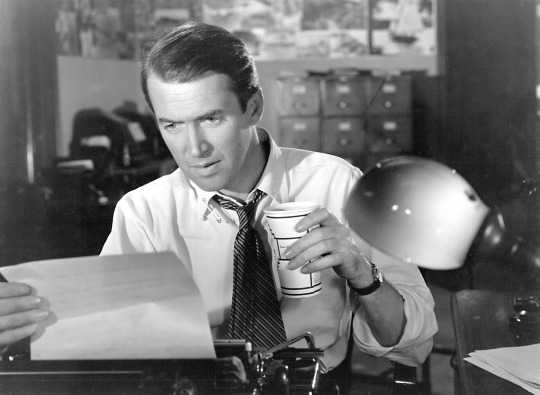
But I think Stewart did his best work in the 1950s. He was certainly adventurous playing flawed, conflicted characters and eccentric individuals. There was a dangerous, nervous cat-like quality to his roles. And there was often a sexiness to his performances. He also worked with some of the best directors, including Hitchcock, Anthony Mann, Billy Wilder and Otto Preminger.
Stewart began his fruitful collaboration with Mann—they made eight films together—with the gritty Western WINCHESTER ’73 (‘50). Mann had made a name for himself in the late 1940s with such low-budget atmospheric films noir as RAW DEAL (‘48). Mann brought a noir sensibility to WINCHESTER ’73, in which Stewart plays the Everyman on the edge doggedly trying to find the Winchester ’73 rifle that was stolen from him, while laser-focused on tracking down the man (Stephen McNally) who stole it and also murdered his father. Stewart is just terrific playing a conflicted man who is filled with rage.
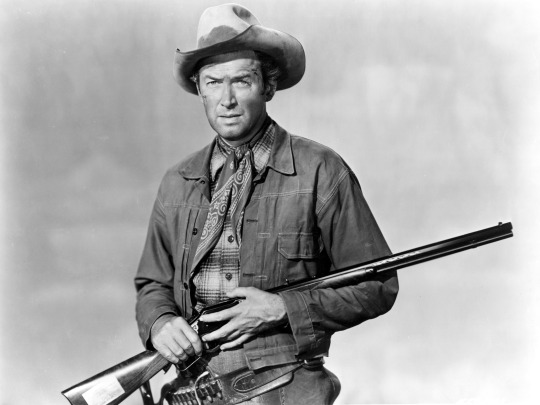
My favorite Stewart-Mann production is THE NAKED SPUR (‘53). In this exceptional Western, Stewart is even more wired. He plays a Civil War vet who lost his land during the war and becomes a bounty hunter. But he more than meets his match with his latest capture, a wily outlaw (Robert Ryan) and the two companions he picks up (Millard Mitchell, Ralph Meeker) to help him. THE NAKED SPUR isn’t just a Western adventure, it’s a psychological one. The scene at the end when Stewart loses it in front of the outlaw’s companion (Janet Leigh) – crying, yelling and shaking with hatred and grief – is an astonishing piece of acting.
Stewart and Mann didn’t just do Westerns. They scored a huge hit with the biopic THE GLENN MILLER STORY (‘54) and STRATEGIC AIR COMMAND (‘55). The latter was close to Stewart’s heart because it revolved around the Air Force and flying. He plays a baseball player who is reactivated in the Air Force to test flight new planes. The film gets bogged down on land when it concentrates on his private life with June Allyson, but he and the film soar when it takes to the air.
The same year he made WINCHESTER ’73, Stewart also began another fruitful collaboration with director Henry Koster. In fact, he received his fourth Oscar nomination for the delightful HARVEY (‘50) based on Mary Chase’s popular Broadway play about an eccentric Elwood P. Dowd, who has an invisible six-foot tall white rabbit named Harvey as his best friend. Stewart had filled in for the part on Broadway in 1947 when star Frank Fay went on vacation. Though Dowd is an alcoholic, the Production Code prevented Koster from showing him taking a drink. Almost 20 years later, Stewart and Helen Hayes appeared on Broadway in a revival of the play, and then in 1972 reprised their roles for a Hallmark Hall of Fame presentation.
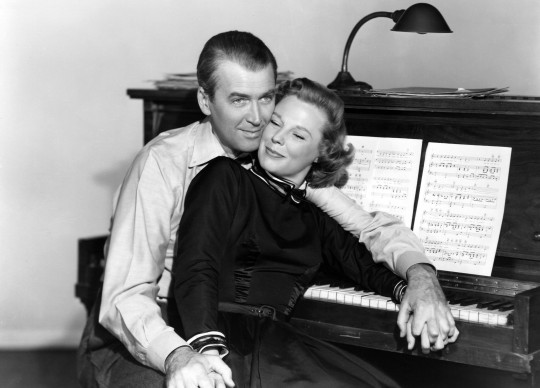
The following year, Koster and Stewart teamed up again for the taut British thriller NO HIGHWAY IN THE SKY (’51). Stewart is entirely believable as a brilliant but absent-minded engineer who has a hard time convincing anybody that an expensive new airplane model is not safe. The film also paired him with his DESTRY RIDES AGAIN (’39) leading lady, Marlene Dietrich.
Stewart is probably best remembered in the 1950s for his work with the Master of Suspense in REAR WINDOW (‘54); THE MAN WHO KNEW TOO MUCH (‘56) and VERTIGO (‘58). So much has been written and discussed about those films, all I want to say is that REAR WINDOW and VERTIGO are my two most favorite Hitchcock thrillers, and Hitch had to have really delved into Stewart’s psyche to get that brave, daring turn from the actor in VERTIGO. I know that it’s a polarizing film, but I think it’s brilliant, demanding and a psychological thrill ride. I am still very much on the fence with the only film Stewart made with Wilder, THE SPIRIT OF ST. LOUIS (‘57).

Based on Charles Lindbergh’s award-winning best-seller chronicling his landmark 1927 flight across the Atlantic to Paris, the film is beautifully shot and consistently engrossing. But the big problem is that Lindberg was 25 when he made the flight and Stewart was 48 when he made the film. Just as with STRATEGIC, Lindbergh’s story was very inspiring to Stewart so, he lost weight, got in shape and lightened his hair to play Lucky Lindy. He’s very charming in the part, but there’s no getting over the fact he’s nearly 50 years old.
Stewart ended the decade with a real crackerjack of a legal drama, Otto Preminger’s ANATOMY OF A MURDER (‘59). Nominated for six Academy Awards, including Best Film, Best Actor for Stewart and Supporting Actor for Arthur O’Connell, ANATOMY OF A MURDER raised more than a few eyebrows for its sexual frankness at the time, with Stewart talking about rape, panties and even semen. He’s perfectly cast as the witty, brilliant small-town attorney who seems to enjoy fishing more than taking cases. He gets the case of his career, though, when he’s hired to defend a hot-tempered Army lieutenant (Ben Gazzara) accused of murdering the man who allegedly raped his wife (Lee Remick).
Stewart has a wonderful rapport with Eve Arden as his longtime secretary who secretly loves him and Arthur O’Connell as his alcoholic buddy, an attorney who gets his mojo back when he helps Stewart on the case. And the scenes his scenes with the flirtatious Remick and George C. Scott as the slick big city prosecuting attorney just couldn’t be better. Nevertheless, Stewart lost the Oscar to Charlton Heston for BEN-HUR (’59). Stewart was presented with an Honorary Award from the Academy in 1985.
#James Stewart#Jimmy Stewart#Vertigo#Harvey#Alfred Hitchcock#Anthony Mann#TCM#Turner Classic Movies#Susan King#Anatomy of a Murder#Henry Koster
146 notes
·
View notes